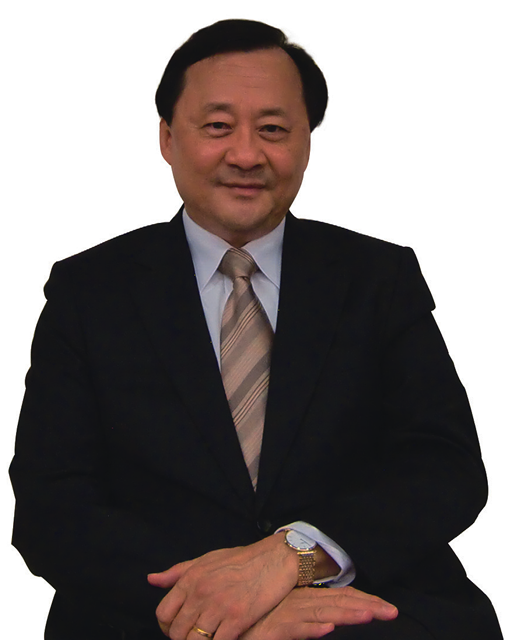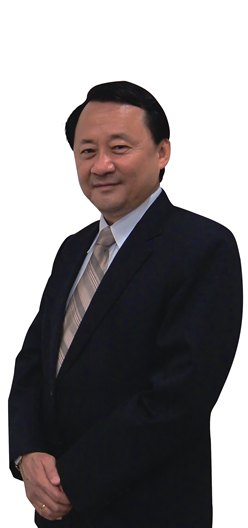The Research Grants Council (RGC) has served
the higher education sector and the research
community in Hong Kong for more than two
decades, during which the field of research has
moved towards globalization and collaboration
amidst intensifying competition for funding and
for research talents. In the midst of this dynamic
current, Professor Benjamin W Wah assumed
Chairmanship of the RGC in January 2013, as
Professor Roland Chin retired as the Chairman of
RGC after a remarkable seven-year service.

Professor Benjamin Wah, on taking over the
role as the fourth Chairman of the RGC, visited
all eight of the University Grants Committee
(UGC)-funded institutions in Hong Kong in
March and April to exchange views on the
work of the RGC and on research-related
matters in a bid to gauge the strengths and
weaknesses of local research in order to
help him form an informed picture of the
opportunities available to and the threats
against the research sector in Hong Kong.
Professor Wah finds the exchange with faculty
members and staff handling research-related
matters at the institutions very fruitful. Equipped
with the views collected at these meetings and
drawing on his own experience and insights,
Professor Wah has drawn up a SWOT (Strengths,
Weaknesses, Opportunities and Threats) analysis
on research funding in Hong Kong to facilitate
the formulation of strategic plans for the RGC.
The new Chairman of the RGC has identified
a number of Strengths (S) in the research
sector in Hong Kong. The RGC, established in
1991, has helped propel a lot of developments
in supporting research in Hong Kong. “There
is now stable funding from the government
for research and this funding is not affected by
the economy.” Professor Wah adds, “Funding
amounts and success rates are both decent.”
The UGC provides research funding totaling
HK$5.6 billion per year (which includes over
$1.1 billion in RGC funding, $1.5 billion in
research post-graduate student (RPg) funding,
and $3 billion in the form of the R-portion
funded through block grants). With over
4500 active academics in Hong Kong, each
academic is supported by HK$1.24 million
approximately on average. The academics’
success rate in terms of getting funding
approval for their research projects in the
General Research Fund (GRF), the Early
Career Scheme (ECS), and the Humanities and
Social Sciences Prestigious Fellowship Scheme
(HSSPFS) is over 36% in 2013/14, higher than
the rates on similar types of funding schemes
in other countries. Professor Wah points out
that the research excellence achieved by
Hong Kong’s academic institutions is evident
in the high international rankings accorded
to them. In addition, as an international city,
Hong Kong has advantages in attracting and
recruiting outstanding researchers from around
the world. Hong Kong also has advantages
in being the bridge that facilitates exchanges
between Mainland academics and overseas
academics. These are the many strengths that
the research community in Hong Kong can
capitalize on.
In terms of Weaknesses (W), Professor
Wah notes that “Hong Kong is facing severe
competition from the Mainland and other
Asian countries like Singapore for talents.” For
example, in the past five years, many Mainland
universities have endeavoured to attract research
talents from around the world. In addition to
offering better remuneration packages, Mainland
institutions are also providing additional research
support such as building laboratories for specific
purposes and establishing research teams for
the recruits. These endeavours have lured a
number of academics to leave Hong Kong for
the Mainland.
In addition to external factors, the views
collected during Professor Wah’s visits in March
and April point to a common concern among
local institutions – the career prospects for
graduates in the Science, Engineering and
Technology fields. As a service-oriented city
and an international finance centre, there is
no dispute that Hong Kong is putting its focus
on financial and service industries rather than
on the hi-technology sector. With the limited
number of hi-tech companies in Hong Kong and
a large number of the hi-tech developments in
the Pearl River Delta area, the career prospects
in Hong Kong for graduates with science and
technology degrees are not the greatest, as the
sector is not able to fully absorb the over 9,000
undergraduates and about 1,000 postgraduates
with science and technology degrees on an
annual basis. “This is not to say that hi-tech
companies do not need recruits. They do, but
there is a mismatch between what is available
and what is needed in the job market, and
graduates should keep an open mind because
they may sometimes find better opportunities
outside Hong Kong.”
|
|
With a firm grasp of the Strengths and
Weaknesses, it is important that Opportunities
(O) and Threats (T) are identified. Professor
Wah notes that collaborative research is the
future to further bring research excellence
to Hong Kong. Currently, more than half of
the GRF applicants are conducting research
individually. While larger-scale projects under
the Theme-based Research Scheme (TRS) and
Areas of Excellence (AoE) Scheme involve
more researchers, small-scale collaborations,
either within or across institutions, are still not
a common trend. Professor Wah says that the
opportunity for development and growth for
Hong Kong’s research lies in the expansion of
collaborative research across all levels – among
different institutions and also across disciplines
within the same institutions. These opportunities
exist in Humanities and Social Science, as well
as Science, Engineering, and Medicine. Starting
from next year, the size of the Collaborative
Research Fund (CRF) will be increased from
HK$80 million to HK$0.1 billion, and smallscale
collaborative projects will be strongly
encouraged.
Another opportunity lies in improving teaching and learning in the higher education. A tripartite funding of HK$82 million from the Education Bureau, the UGC and UGC-funded institutions (in the form of a matching fund) has been set up to accelerate the adoption of necessary pedagogical changes and innovations. This fund may provide incentives to develop new Massive Open Online Courses (MOOC) capabilities for Hong Kong. For instance, one possible initiative is to set up a MOOC platform that would allow the eight institutions to share courses and course content of an introductory nature leading towards their major disciplines. Professor Wah explains the benefit of the MOOC, “Apart from sharing of teaching material, it also offers students a chance to modify the way they learn – having prepared for their classes ahead of time through the MOOC platform, students can devote more class time to discussion and to enrich their learning experience and to expand their knowledge through discussion. This platform is also beneficial to secondary school students who can acquire relevant knowledge prior to embarking on their university studies.” The UGC, according to Professor Wah, considers teaching and learning as one of its key focus areas and RGC will support pedagogical studies that link research to teaching and learning.
While capitalizing on the opportunities that
present themselves, the threats are not to be
overlooked. Professor Wah says, “There are a lot
of areas in which we wish to develop. However,
we are limited by not having the desirable
critical mass. In Hong Kong, we only have an
aggregate of about 4,500 faculty members,
which is comparable to the size of 1 to 2
large institution(s) in the United States. As a
result, we are not able to develop national
laboratories like in other countries. To be able
to compete on the international arena, we
are still lacking in terms of size and scale.”
He adds, “Although the self-financing
sector will help build our critical mass,
its development and fine-tuning will
take time.” Currently, not a lot of local
graduates are interested in pursuing
postgraduate studies in Hong Kong.
However, to Professor Wah, this can
present itself as an opportunity for
Hong Kong as the postgraduate places are filled by research talents who are
attracted to Hong Kong from all over the globe.
“From the perspective of academic research and
exchange,” Professor Wah elaborates, “research
talents should not be bound by geographical
boundaries.” “Many local students want to go
overseas to pursue their studies in order to
broaden their horizon. At the same time, nonlocal
talents who come to Hong Kong bring with
them enormous contribution towards the future
development of Hong Kong.”
Professor Wah realizes that it has not been the
RGC’s customary practice to use SWOT analysis
to help determine strategic development. The
RGC has decided that going forward, it will
incorporate discussions on strategic planning
in its meetings. Turning research results into
something that will bring positive impacts and
benefits to Hong Kong is to be encouraged and
will be on the RGC’s agenda. Professor Wah
reminds local researchers that it is important to
strive for research that impacts Society, whether
inside or outside Hong Kong, so that society as a
whole can benefit.

|
